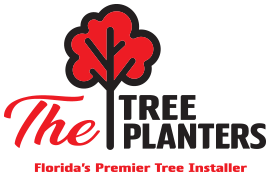SLASH PINE
The Slash Pine offers a unique and open shade, unlike the dense canopy of trees like the live oak, allowing nearby plants to thrive with sufficient light while still enjoying some protection. This environment is perfect for various shrubs and ground covers. Moreover, Slash Pines play a vital role in creating natural bird sanctuaries by providing shelter from predators and attracting species such as the pileated woodpecker, owls, eagles, and egrets.
Slash Pine (Pinus elliottii) is one of three significant “southern yellow pines” in commercial forestry across the southeastern U.S., alongside longleaf pine (P. palustris) and loblolly pine (P. taeda). These large evergreen conifers are characterized by their long needles and sizable cones. Distinguishing features include thinner branchlet tips compared to longleaf pine and cones on short stalks unlike loblolly’s sessile cones. Needle lengths also vary: Loblolly needles measure 6-9 inches; slash pine needles are 8-12 inches; longleaf needles reach 12-18 inches.
There are two varieties of Slash Pine: Pinus elliottii var. elliottii is widespread with an ordinary seedling stage, typically growing 60-100 feet tall; its National Co-champion stands at 138 feet in Duval County, Florida. The South Florida slash pine (P. elliottii var. densa) is smaller at around 55 feet tall with lower branches and a wider crown adapted to frequent fires through its grass stage seedling phase—similar to that of the longleaf pine—where it develops resilience before rapid growth.
This earnest exploration into the characteristics of Slash Pines highlights their ecological importance both as a habitat for wildlife and as key players in forestry practices across their native regions.
Pinus elliottii var. elliottii naturally occurs in moist areas such as swamps, low hammocks, sloughs, along streams, on barrier islands, and in pine flatwoods where it may be the only tree species. Historically, it was excluded from upland areas due to frequent natural lightning-caused fires, which the longleaf pine resisted. Today, natural fires are rare, allowing slash pine to dominate thousands of acres once occupied by longleaf pine. Slash pine is widely planted in commercial tree farms because it grows faster than longleaf pine. Its natural range is the Coastal Plain from southeastern South Carolina to Florida, and west to Louisiana. Slash pine has also been planted for pulp and timber outside its natural range, becoming established in Kentucky, Virginia, and East Texas.
The fire-adapted South Florida slash pine (P. elliottii var. densa) thrives where the fire-adapted longleaf pine (P. palustris) does not: in the southern half of the Florida peninsula. Slash pine is intolerant of shade and, while naturally found in moist areas, can grow successfully on drier sites. Its seeds germinate readily, and the tree self-seeds abundantly.
Hardiness is USDA Zones 7-10. Pinus elliottii var. elliottii occurs naturally in zones 8 and 9A, and has been planted in zones 7 and 9B. The natural range of P. e. var. densa is restricted to zones 9B and 10 and likely hasn’t been planted much outside that area.
Slash pine and longleaf pine were once crucial in the naval stores or turpentine industry. Mature trees were scored down to the cambium layer with a tool called a hack. A container was placed below the wound to collect the resin, used for waterproofing ships and making turpentine and rosin, which had various uses. Today, one might still find an old turpentine pot (called a Herty pot, after its inventor) on the ground in old-growth stands of slash or longleaf pine.

